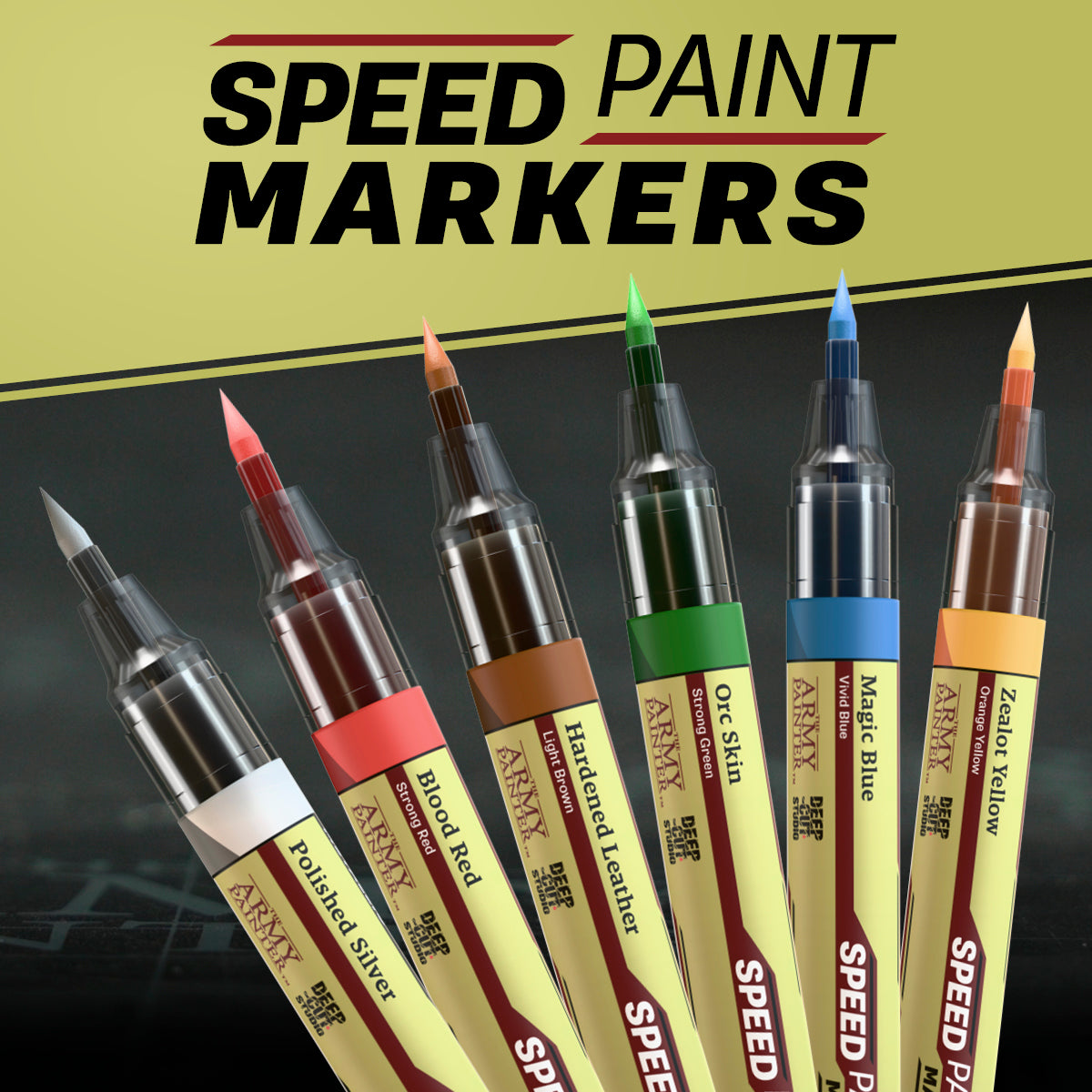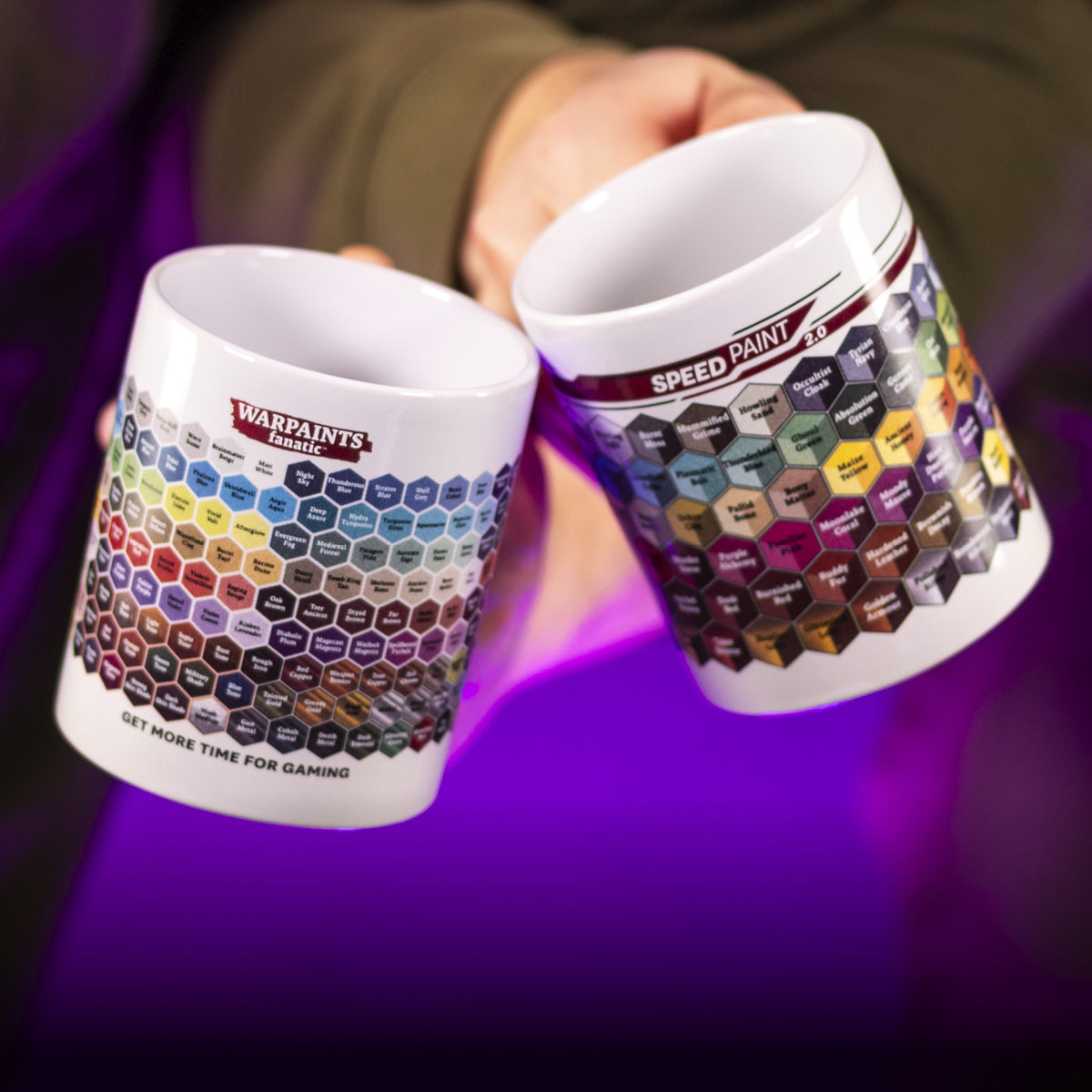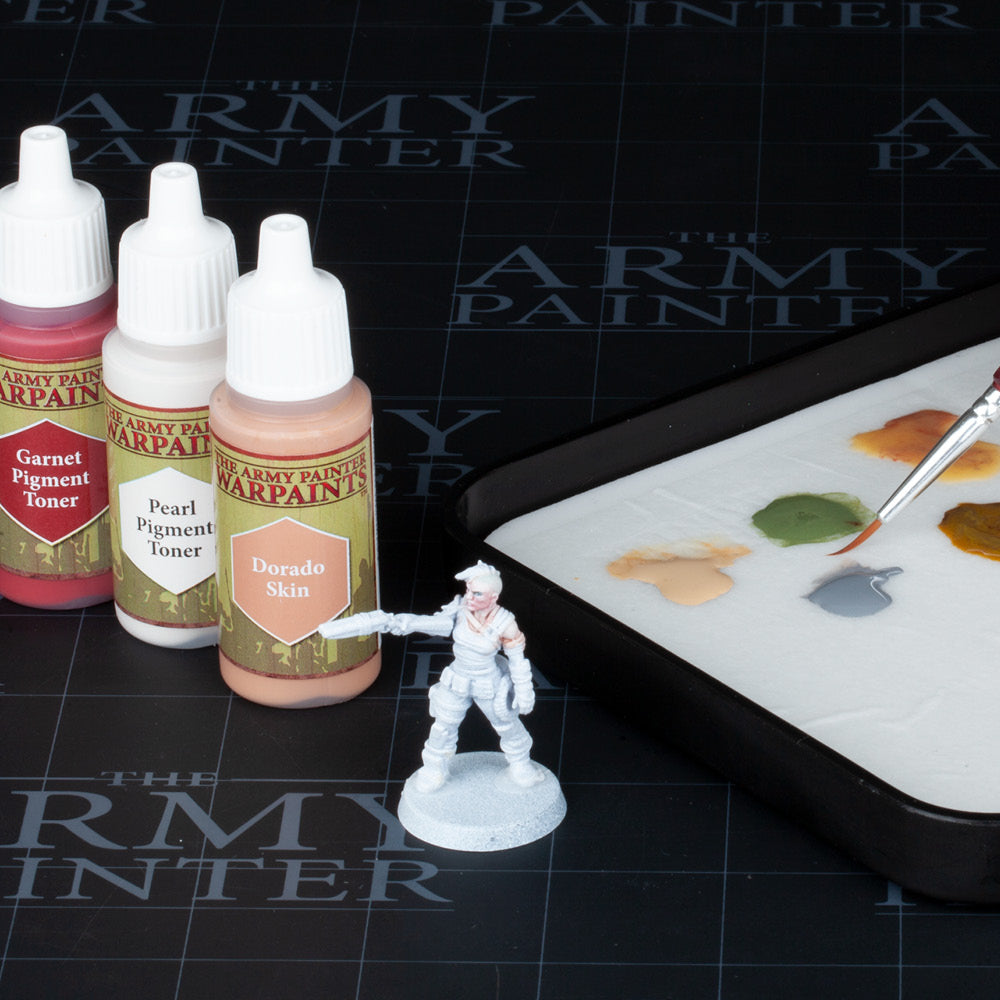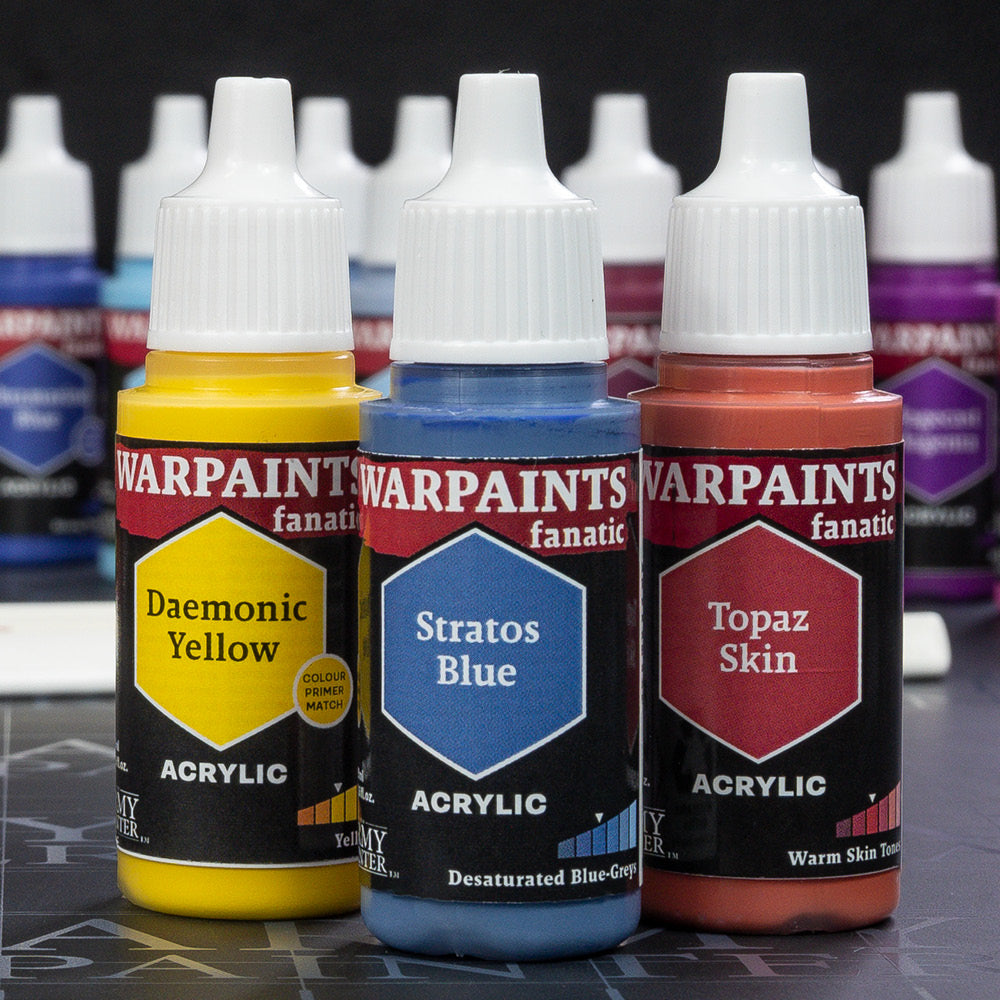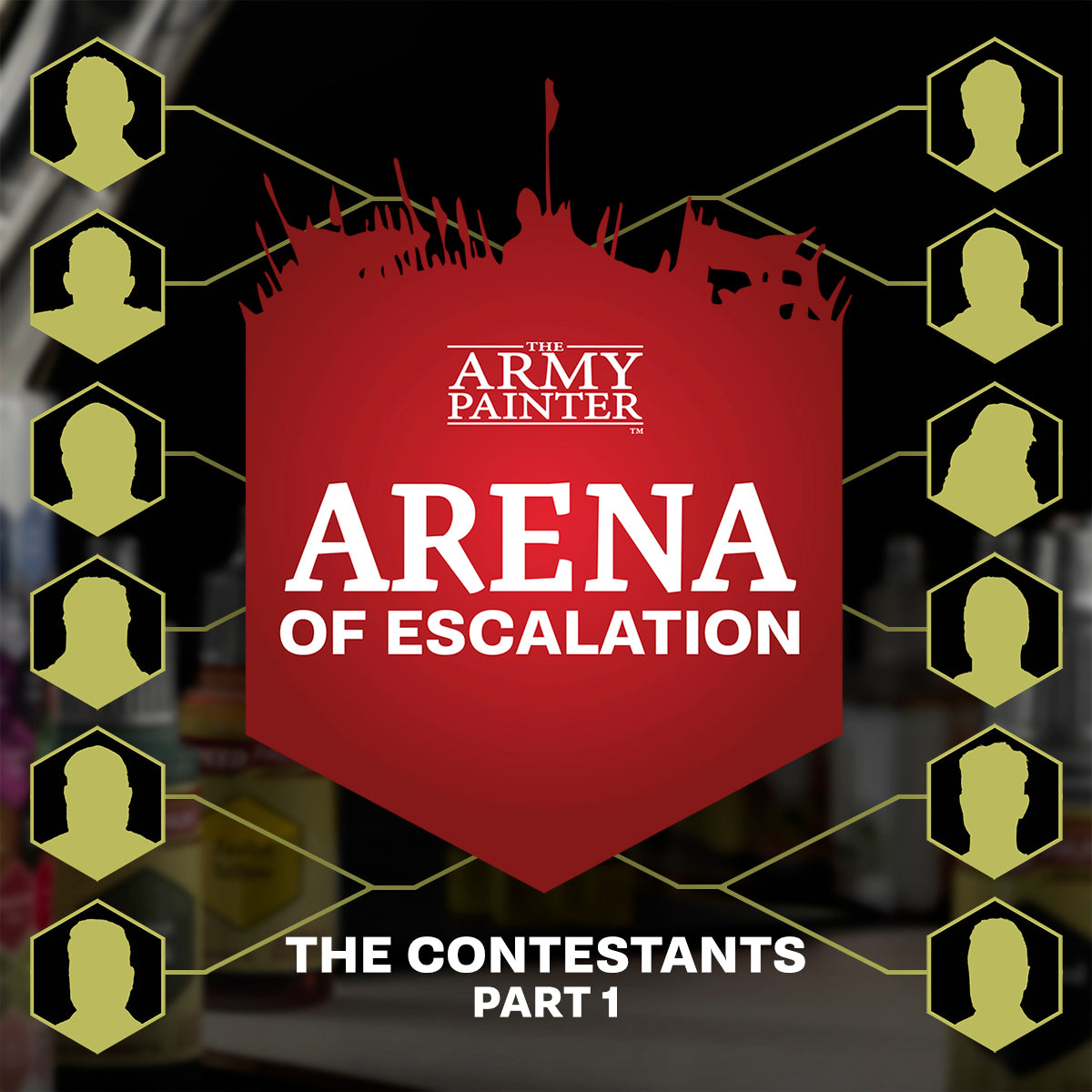Choosing a Colour Scheme for Your Miniature
Playing games with painted miniatures is 100% cooler than with grey, unpainted ones. Painted miniatures make your games come alive with immersion and add fun to every session!
A well-chosen colour scheme can breathe life into the miniature, enhancing its details, reflecting its character, and setting the desired mood, making it stand out on the gaming table.

In this article, we’ll introduce you to the basics of colour theory, what to consider when picking the colours for your board game, miniature, or army, and how to create stunning colour schemes for your miniatures, even as a beginner.
How To Create a Colour Scheme for Your Miniature
Before diving into the theoretical part, we’re going to start with looking at some of the other things you should keep when creating a colour scheme.
Here's four tips to help you create a colour scheme.
Tip 1: Consider the Miniature’s Role and Setting
Start by considering the setting and environment of your miniature. Is it a fantasy character, a historical figure, or part of a wargame army? Also, where does the story take place? Is it in a forest, a desert, or a futuristic city?
Another element to keep in mind is the role of your miniature. A leader might have more vibrant colours, while scouts might have muted, camouflage colours. A forest ranger might have greens and browns, while a royal knight could have rich purples and golds.
So, let the theme, the setting, and the miniature’s role influence and guide your colour choices.
Tip 2: Colours Convey Feelings
Different colours and combinations can evoke specific emotions, aiding in storytelling, character development, and atmosphere in miniatures. Dark and muted colours can create a grim or sinister mood, while bright and saturated colours might suggest vibrancy and energy.
- Red is associated with aggression, danger, passion, strength, fire, and energy. Red can for instance be used for aggressive factions, warlike tribes, and to denote leaders or elite units.
- Blue is associated with wisdom, stability, serenity, loyalty, water, and calmness. Blue can for instance be used for noble or “good” factions, depicting armour or magical effects, and for units associated with water or the sky.
- Green is associated with nature, growth, renewal, being calm, and sometimes poison or corruption. Green can for instance be used for elves, forest creatures, or toxic warfare units as well as for camouflage in jungle or forest settings.
- Yellow/Orange is associated with energy, warmth, caution, fire, and sometimes madness or corruption. Yellow and orange can for instance be used to highlight details, denote psychic powers, or for desert and arid environment factions.
- Purple is associated with royalty, magic, mystery, luxury, and sometimes corruption or decadence. Purple can for instance be used for royal figures, magic warlocks, and elite units.
- Black is associated with death, the unknown, power, and fear. Black can for instance be used for evil factions, shadowy figures, and as a contrast to make other colours stand out.
- White is associated with purity, light, safety, and cold. White can for instance be used for good factions, divine or holy characters, and to represent armour or magical light.
- Brown is associated with earth, ruggedness, poverty, or simplicity. Brown can for instance be used for peasant or low-tech units.
So, what feelings do you want to evoke with your miniature?
Tip 3: Visual Balance and Scale
Ensure that the colour scheme is visually balanced. Too many bright or dark colours can overwhelm the figure, while a lack of contrast can make it appear dull. Aim for a scheme that highlights key details while maintaining overall harmony.
You should also consider the miniature’s size. Because miniatures are normally small, some colours might not show up as well or might look different when applied to a small area. Choose colours that make the details visible and enhance the miniature’s features.
Tip 4: Be Adventurous in Your Palette

Choosing contrasting colours or colours close to each other (see the colour wheel) – all results in different looks. Sometimes, the least apparent combination of colours works the best – or colours not associated with a particular army, like white armour for dark elves or pink for alien horrors from deep space.
Go for it! It will turn heads at any gaming convention.
What is Colour Theory?
Colour theory is – very briefly described – the study of how colours work together and how they affect our emotions and perceptions.
The Colour Wheel: Understanding the Relationships of Colours
Colour is complex – but knowing just a bit about colour theory can help you choose a colour scheme that works well for your army. Understanding the relationship between colours and how they mix can help you achieve great results.
A great tool in that respect is the colour wheel, a visual representation of colours arranged according to their chromatic relationship.
The wheel helps us understand colour relationships: how they complement, contrast, and interact. It shows the primary, secondary, and tertiary colours.
- Primary colours: Although must people think of Red, Yellow, and Blue as the primary colours, this is not correct. Instead, the primary colours are Cyan, Magenta, and Yellow. Although this may seem like a minor detail, it’s important to know when you start experiment with mixing your own colours.
- Secondary colours: Orange, Violet/Purple, and Green, and are made by mixing two primary colours).
- Tertiary colours: made by mixing a primary colour with a secondary colour.
Colour Relationships and Selecting the Colour Scheme for Your Miniature
Obviously, there are MANY different ways of putting a colour scheme together.
That can make selecting colours for your miniature quite daunting, especially for beginners. What if you make the wrong choice?

If you don’t know where to start, find it difficult to combine colours, or are unsure about which colours work well together, the colour wheel, with its array of primary, secondary, and tertiary colours, is your best friend.
Understanding how colours interact on the wheel – through complementary (opposite colours) and analogous (adjacent colours) relationships – is key to creating harmony and contrast in your work. When using the colour wheel to create a colour scheme, start by choosing the miniature’s dominant colour and then select colours that complement or contrast with the dominant colour.
Below, you will find three examples of how you could select colours from the colour wheel. There are many more ways to select colours from the colour-wheel, but these are our suggestions for the ones that you should experiment with first.
We started by choosing the skin colour for the model and decided on the other colours based on these patterns, getting wildly differing results each time.
Colour Scheme 1: Using Complementary Colours

Complementary colours are situated directly across from each other on the colour wheel. The two colours make each other stand out. Thus, the complementary colour scheme provides the greatest amount of colour contrast, which can be good for making your miniatures pop on the tabletop.
Here, the muted blues of the orc’s skin make his rusted armour stand out and emphasise the battle damage.
Colour Scheme 2: Experimenting with Split-Complementary Colours

A split-complementary colour scheme consists of a base colour and the two colours directly adjacent to the dominant colour’s complement. This approach provides contrast but is less intense, making it easier to achieve a balanced look.
Here, the shadows of the orc’s skin are a cooler turquoise than the highlights, and it also doubles as verdigris on the armour.
Colour Scheme 3: Exploring with Analogous Colours

Analogous colours are next to each other on the colour wheel. These are great for creating subtle and cohesive colour schemes with a more harmonious look. The analogous scheme can help you get a realistic and balanced look, even when the subject is something fantastical and magical.
By using only red, orange, and yellow hues, this orc radiates a scorching magic fire.
Get Inspired!
You don't have to only look at what other people have done. Sometimes the best inspiration comes from completely surprising sources. Look at packaging or photos you like and find out which colours are dominant. Maybe they even fit in a relationship on the colour wheel?

